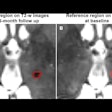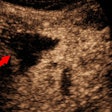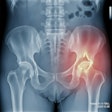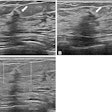Adherence to surveillance imaging after endovascular abdominal aortic aneurysm repair (EVAR) is high among veterans, according to research published April 24 in JAMA Network Open.
A team led by Laura Newton, MD, from Dartmouth Health in Lebanon, NH, found that more than 70% of surveyed veterans receive guideline-adherent annual postoperative surveillance CT or ultrasound. However, adherence numbers decreased the further out from EVAR the patients were.
“Imaging departments can use this information to improve imaging surveillance compliance after EVAR by incorporating patient-centered efforts such as focused outreach and transportation coordination," Newton told AuntMinnie.com.
Medical societies recommend annual surveillance imaging after EVAR. The Society for Vascular Surgery recommends that baseline contrast-enhanced CR and color duplex ultrasound be performed within 30 days of EVAR.
However, the researchers noted that it’s not well-described how these guidelines translate into practice among veterans.
For their study, Newton and colleagues characterized longitudinal surveillance imaging after EVAR, described the types of imaging used over time, and determined factors tied to lapses in surveillance. Final analysis included data collected from 27,792 veterans who had an average follow-up of six years.
The average proportion of time that veterans adhered to surveillance was 71.1%, the team reported. However, this number was initially higher at 90% one year after EVAR. This decreased further out from EVAR, with 58% of surveyed veterans undergoing surveillance imaging at four years post-EVAR.
Also, veterans were most likely to undergo CT imaging (78.8%), but ultrasound gained ground throughout the study. While just 3.3% of the surveyed veterans underwent ultrasound one year after EVAR, the researchers reported that 20.7% had ultrasound performed on them in the fourth year post-EVAR.
Finally, the team identified the following factors associated with lower odds of poor adherence to surveillance: white race (odds ratio [OR] versus all other racial groups, 0.84), married status (OR versus all other social status categories, 0.80), having a service-connected disability (0.69), and having a higher Charlson Comorbidity Index score (OR per one-unit increase, 0.93).
While the study authors did not directly compare results between veterans and other patients, they suggested that veterans have a higher adherence rate to post-EVAR surveillance imaging than patients in other settings.
Newton said ultrasound's increased use during the study period likely reflects modifications in societal guidelines that advocate, or at least allow, for the modality's use as an alternative to CT imaging.
"These more recent guidelines are based on studies showing the safety and efficacy of ultrasonography in detecting issues with endografts when compared to CT imaging," Newton told AuntMinnie.com.
The authors wrote that future studies will explore associations between different surveillance patterns and late EVAR outcomes.
The full study can be accessed here.




















